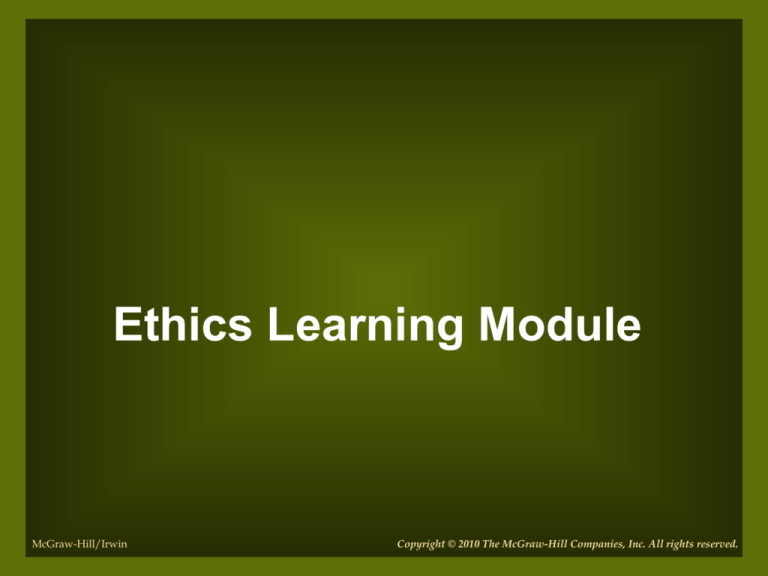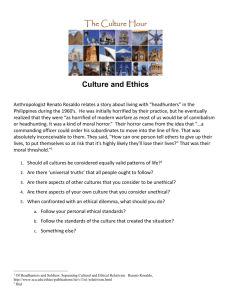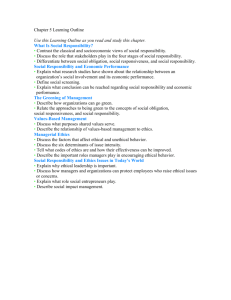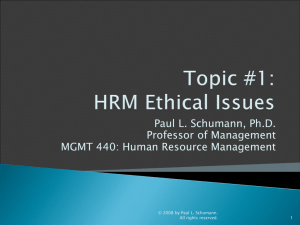
Ethics Learning Module
McGraw-Hill/Irwin
Copyright © 2010 The McGraw-Hill Companies, Inc. All rights reserved.
The Ethics Challenge
• Corporate officers are now subject to high
accountability standards and harsh
penalties under the Sarbanes-Oxley Act of
2002
• Experts have estimated that U.S.
companies lose about $600 billion a year
from unethical and criminal behavior
LM-2
Ethics
• Ethics
- Study of moral issues
- Concerned with right versus wrong
- Many shades of gray
LM-3
Corporate Social Responsibility
Pyramid
Source: Carroll, A. B. “Managing Ethically with Global Stakeholders: A present
and future challenge, Academy of Management Executive, May 2004, p. 116.
Figure A-1
LM-4
Corporate Social Responsibility
• Corporate social responsibility
- corporations are expected to go above and
beyond following the law and making a profit
LM-5
A Model of Ethical Behavior
in the Workplace
Figure A-2
LM-6
Internal Organizational Influences
• Positive relationship between
organizational size and unethical behavior
• Larger firms more likely to behave illegally
• Managers more likely to behave unethically
in decentralized organizations
• Tendency among middle and lower-level
managers to act unethically in the face of
perceived pressure for results
LM-7
Neutralizing/Enhancing Factors
• Top Management Team (TMT) - consists
of the CEO and his or her direct reports.
• Prior military experience favorably
influences the ethical behavior of
executives
• Organizations are encouraged to increase
the diversity of its TMT if they want to
reduce the chances of unethical decision
making
LM-8
A Decision Tree for Ethical Decisions
Figure A-3
LM-9
Do Moral Principles Vary by Gender?
• Males perceived
moral problems in
terms of a justice
perspective
- Based on the ideal
of reciprocal rights
and driven by rules
and regulations
• Women relied on a
care perspective
- Involves
compassion and an
ideal of attention
and response to
need
LM-10
General Moral Principles
• There are no absolute ethical answers for
decision makers
• Goal for managers should be to rely on
moral principles so decisions are
principled, appropriate, and defensible
LM-11
The Magnificent
Seven: General
Moral
Principles for
Managers
Table A-1
LM-12
How to Improve the Organization’s
Ethical Climate
• Behave ethically yourself
• Screen potential employees
• Develop a meaningful code of ethics
• Provide ethics training
LM-13
How to Improve the Organization’s
Ethical Climate (cont.)
• Reinforce ethical behavior
• Create positions, units, and other structural
mechanisms to deal with ethics
• Create a climate in which whistle-blowing
becomes unnecessary
LM-14









